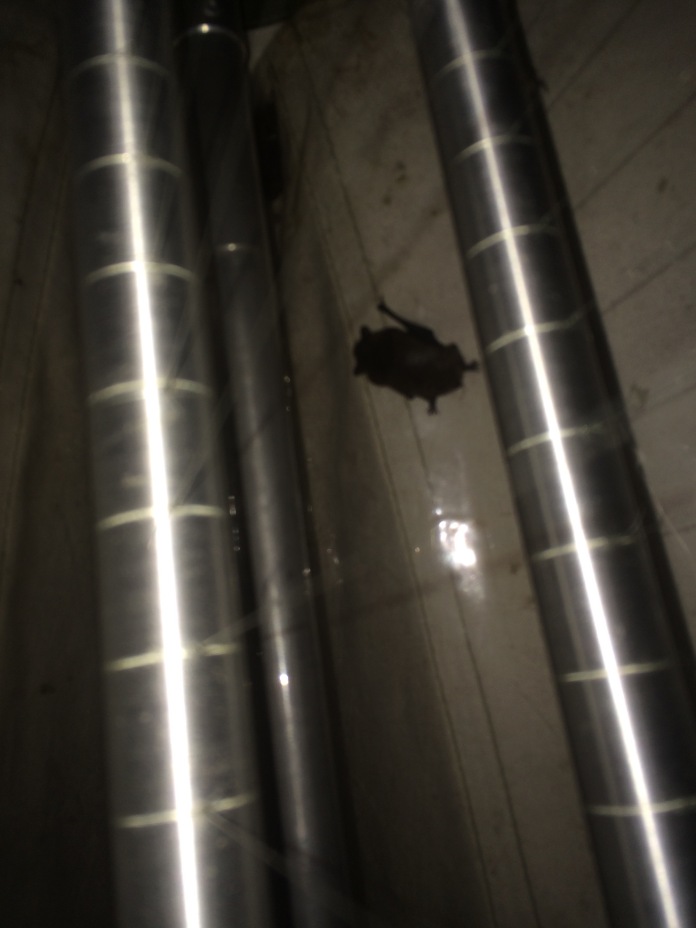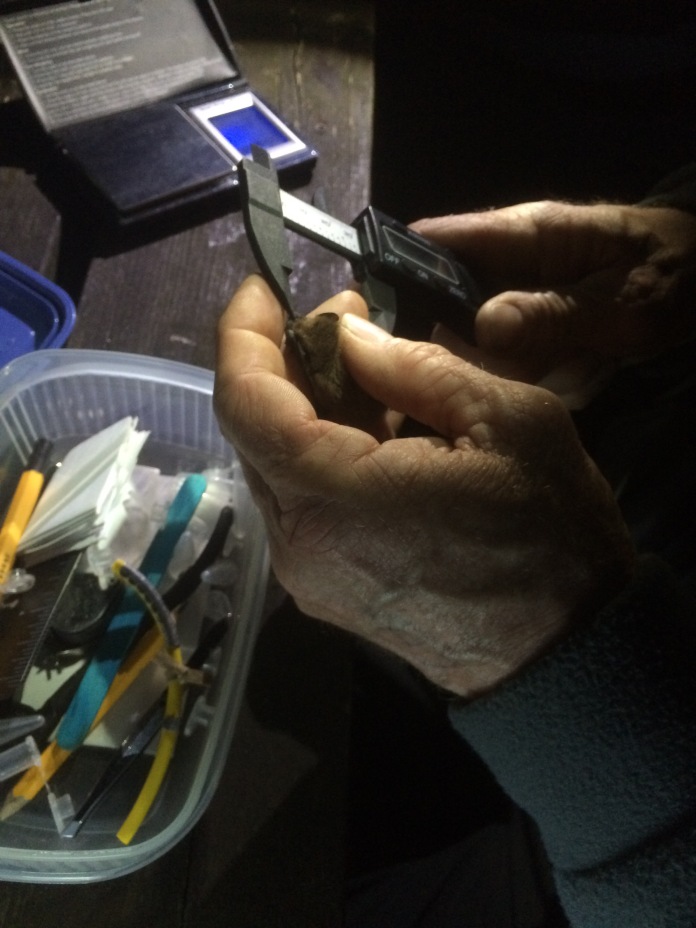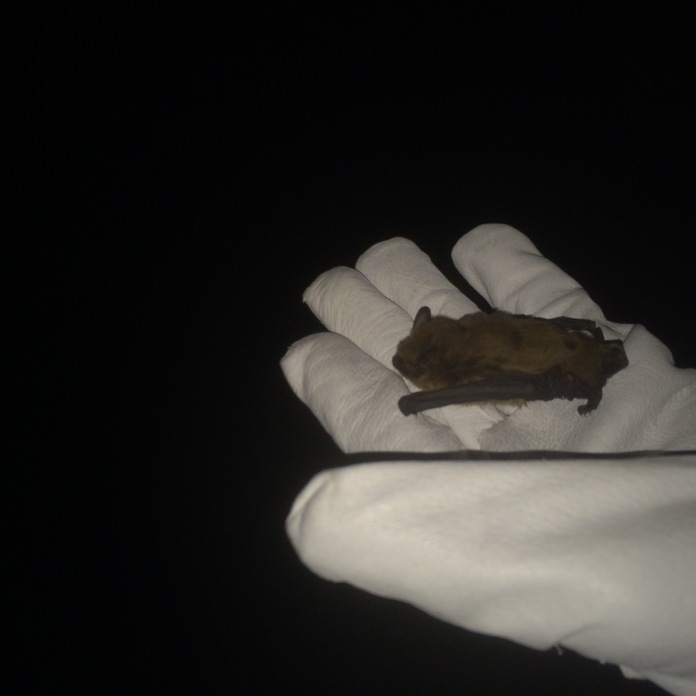On Thursday night Cory and I helped out on the Nathusius project which is attempting to study the range of the Nathusius Pipistrelle. It was our first ever survey and it involved the trapping of bats to measure, weight and sex them by species. We helped before dark, around 8:30pm to put up the harp traps we would use for the capturing of the bats. The harp traps we used were 2 string traps with a lure attached mid trap. The lure was an acoustic lure which emitted an ultrasonic tone designed to entice the bats in for a closer look which then, hopefully leads to them getting caught in the trap. This does not hurt the bats, the strings guide the bats to a trough at the base of the trap which is made of canvass and plastic. When the bats fall down the line they fall onto the plastic and slide into the trough. When they try to climb out on the canvass they get stuck between that and the plastic as can be seen in picture 1. As I say the bats are not harmed by this and we checked the traps every 20 minutes or so.
Once it went dusk we checked the traps and our first visit produced no bats but they could be seen and heard on the detectors nearby. So off we went to await at the station we would use to process any bats we found. This was a handily place picnic table set in a small clearing. With bat detectors on the table we sat and eating another 20 minutes. We heard both common Pipistrelle and Soprano Pipistrelle as well as a couple of Noctule bats near the water. Later we would hear a whispered bat which is the newest of the British bats I have learned to hear on the detector. We had a good talk with the other attendees which were Bill Cove who is running the project and Shirley. We heard about the other animals and birds they liked and the activities of birds in the evenings.
On our next visit to the traps we split into two groups, Cory and Shirley attending one trap near the boat club whilst Bill and I checked the trap near the bird hide. SUCCESS! Bill and I had 3 bats in the trap and we place each in a cotton bag to transport to the processing area. On the way back we met up with Cory and Shirley and they too had bats, 4!
Processing starts with weighting the bag with the bat inside then once recorded we get or first look at the bat and find it is a Pipistrelle. Next we weight the empty bag so we can get to the weight of the bag. Next it is to measure the forearm of the bat as seen in picture 2 and the results are meticulously noted down in picture 3. The final things we do on this is to check the wing membrane to find the type of Pipistrelle we have. We check both wings becaus it has been know that the split that we look at sometimes has been notice only on one wing. Bill has a theory on this and the elusive 50Hz bat. Then a quick hair cut from around its bum and the bat is ready for release. The reason for the hair cut is that Bill sends off the fur for DNA testing to see where the bats have been or come from.
Picture 3
And finally this female Soprano Pipistrelle is ready to fly off. Cory turns his hand thumb up as the bat crawls up his hand then it climbs over the finger head down quick stretch them off it drops and flys away.
Picture 5
All in all we caught 8 bats before we had to go, but the others stayed longer and caught another pip and a whiskered bat. A very enjoyable night and great to see these bats up close.
Please note that bats are a protected species and must not be interfered with in any way. They must only be caugh with a licence, which was obtained for this study. Their roosts must not be disturbed and any injured bat found must not be handled and you should contact the Bat care Helpline 0345 1300 228 who will advise and provide a contact to help with the bat.





